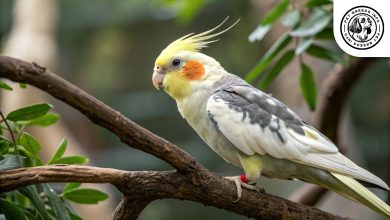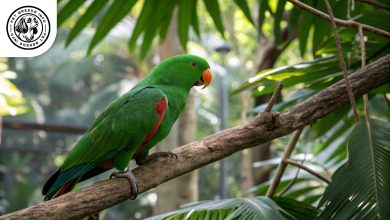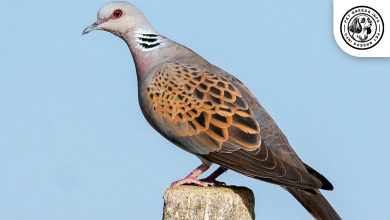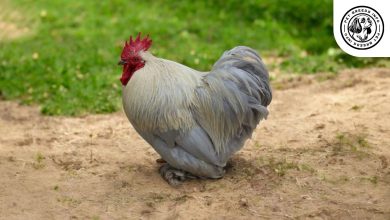Lilian’s Lovebird: Personality, Lifespan, Food & Care
General Introduction of the Breed
Lilian’s Lovebird (Agapornis lilianae), also known as the Nyasa Lovebird, is a species of small, colorful parrot native to southeastern Africa. Its natural habitat includes regions of Malawi, Mozambique, Tanzania, Zambia, and Zimbabwe. This species was first described in 1894 and has since become popular among bird enthusiasts for its vibrant colors and affectionate nature.
Table of Contents
| Common Name | Lilian’s Lovebird, Nyasa Lovebird |
| Scientific Name | Agapornis lilianae |
| Origin | Southeastern Africa (Malawi, Mozambique, Tanzania, Zambia, Zimbabwe) |
| Size | Approximately 13-14 cm (5-5.5 inches) |
| Lifespan | Typically 10 to 15 years in captivity |
| Talking Ability | (Not explicitly mentioned, generally lovebirds are not known for extensive talking abilities) |
| Colors | Predominantly green body, orange or reddish face and throat, bright green wings and back, bluish lower back and rump, red beak |
| Noise Level | (Implied to be potentially vocal and energetic, but not specifically quantified) |
| Social Behavior | Highly social, thrive in pairs or small groups, bond strongly with owners and mates |
Physical Characteristics
Lilian’s Lovebird is among the smallest species of lovebirds, measuring approximately 13-14 cm (5-5.5 inches) in length and weighing around 28-36 grams.
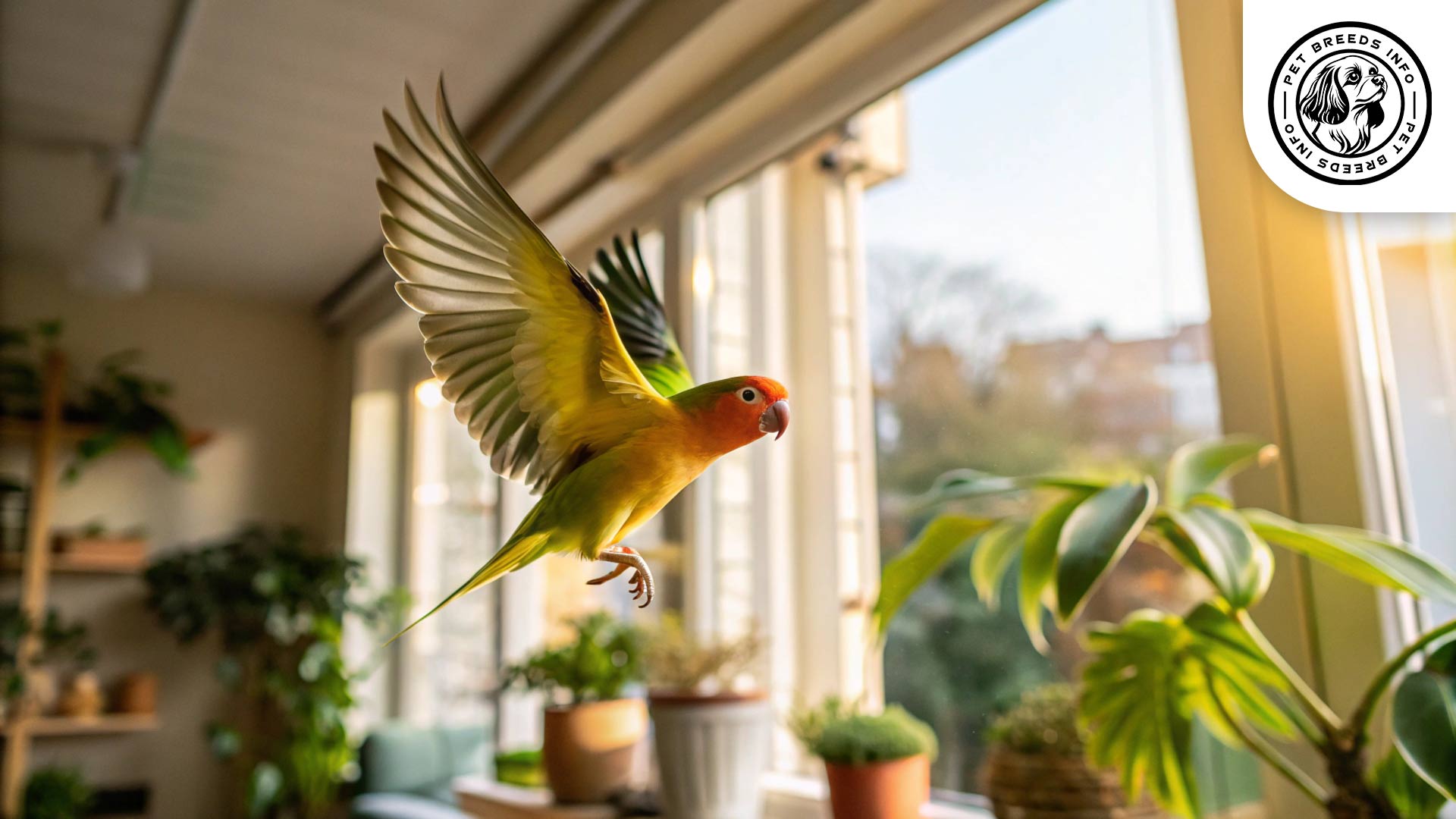
It has a predominantly green body with an orange or reddish face and throat. The wings and back are bright green, while the lower back and rump have a bluish hue. Its eyes are dark brown, surrounded by a white eye-ring, and the beak is a deep red color. Both males and females look similar in appearance, making it difficult to distinguish between genders.
Read More: Brecon Buff Goose
Personality and Temperament
Lilian’s Lovebirds are highly social, intelligent, and playful birds. They bond strongly with their owners and thrive in pairs or small groups. These birds have a high energy level and enjoy interactive play, flying, and foraging activities. They can be feisty but are generally affectionate and loving, making them suitable as companion pets. Due to their strong pair bonding instincts, they do not do well in isolation and may become lonely or stressed without a companion.
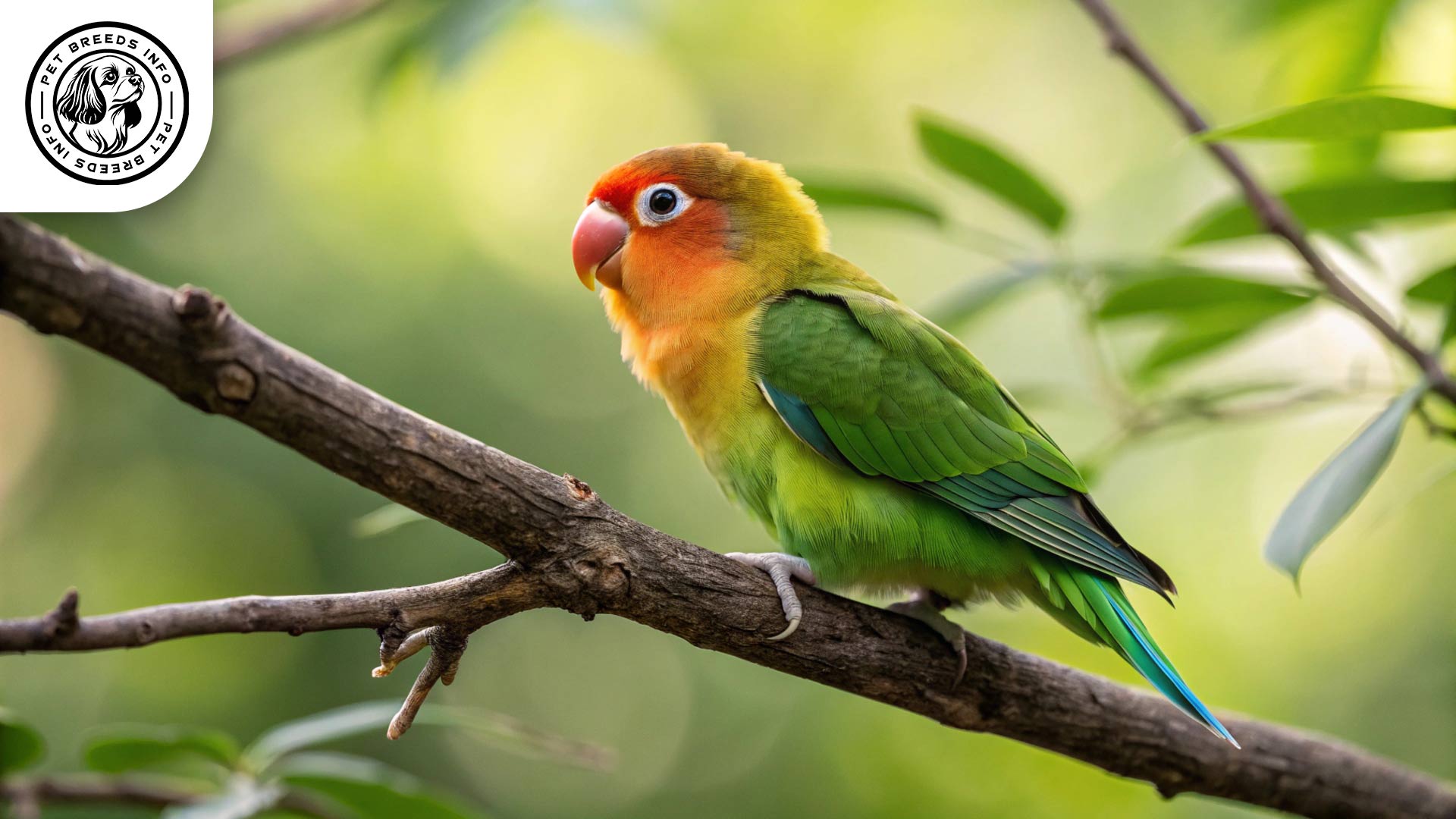
Care and Maintenance Requirements
These lovebirds require a spacious cage with plenty of perches and toys to keep them entertained. They need daily out-of-cage time to exercise and explore. While they can adapt to apartment living, they benefit from a safe, bird-proofed room for free-flying. Their plumage remains in good condition with minimal grooming, though occasional baths or misting help maintain feather health. It is also essential to maintain clean perches and trim their nails periodically. Lilian’s Lovebirds are sensitive to extreme cold and should be kept in a temperature-controlled environment.
Diet and Nutrition
A balanced diet is crucial for Lilian’s Lovebird’s health. They thrive on a combination of high-quality pellets, fresh vegetables, fruits, and seeds in moderation. Foods like avocados, chocolate, caffeine, and salty or sugary items should be strictly avoided. Fresh water should always be available, and portion sizes should be adjusted based on their activity level and weight.

Health and Common Medical Issues
Lilian’s Lovebirds are generally hardy but can suffer from common avian health issues such as respiratory infections, psittacosis, and feather plucking due to stress or boredom. They may also experience nutritional deficiencies if not provided with a varied diet. Regular veterinary check-ups and proper hygiene help ensure a long lifespan, which typically ranges from 10 to 15 years in captivity.
Read More: Zebra Finch Bird
Training and Behavior Management
These birds are intelligent and can be trained to perform simple tricks, recognize their owners, and even respond to basic commands. Training should be done using positive reinforcement, such as treats and praise. Early socialization and consistent interaction help prevent behavioral issues and ensure a well-adjusted pet. Hand-raised Lilian’s Lovebirds are generally more tame and easier to train than those raised in aviary settings.
Interaction with Other Animals and Humans
Lilian’s Lovebirds are friendly and enjoy interaction with their human companions. They bond closely with their owners and prefer to live with a companion lovebird rather than being housed alone. They can cohabit with other birds of similar temperament but may show aggression towards unfamiliar birds. Due to their small size and delicate nature, interactions with larger pets should be carefully supervised.
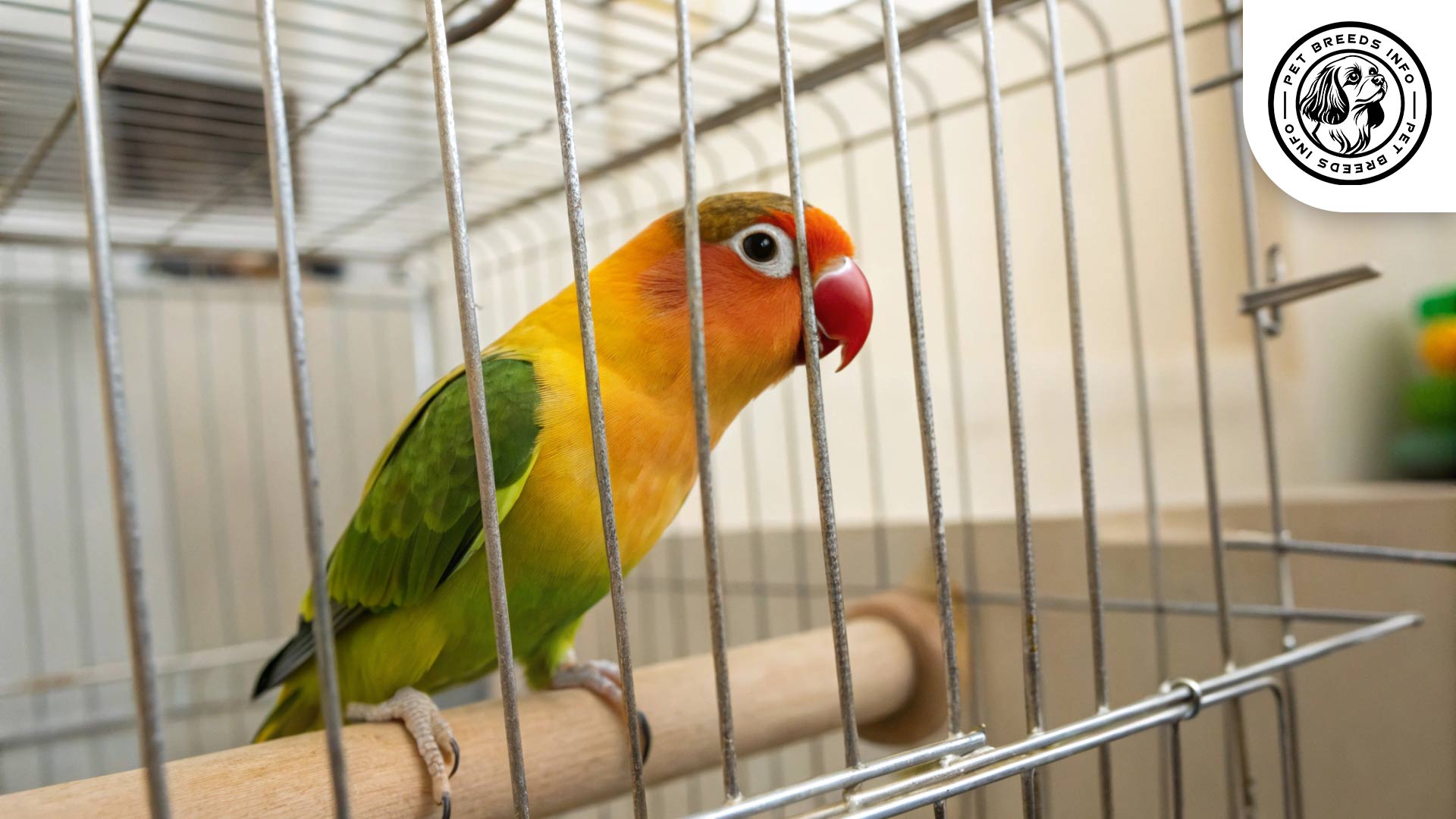
Price and Availability
The cost of a Lilian’s Lovebird varies depending on factors such as breeder reputation, location, and bird age. On average, they can range from $50 to $150. Potential owners should seek reputable breeders or adoption centers to ensure the bird is healthy and ethically raised. It is essential to verify that the bird has been properly weaned and socialized before bringing it home.
Conclusion and Final Thoughts
Lilian’s Lovebird is an excellent choice for bird enthusiasts looking for a vibrant, social, and affectionate companion. They thrive in a loving and interactive home environment, especially when housed with a bonded partner. While they require consistent care, mental stimulation, and a proper diet, their engaging personality makes them a rewarding pet. Prospective owners should consider their social needs and commitment level before adopting this delightful species.
Read More: Pekin Duck Bird
FAQ
How big do Lilian’s Lovebirds get?
They are small birds, typically measuring around 13-14 cm (5-5.5 inches) long.
Do Lilian’s Lovebirds need to live with other birds?
Yes, they are highly social and do best when kept in pairs or small groups. They can become lonely if kept alone.
What do Lilian’s Lovebirds eat?
Their diet should consist of high-quality pellets, fresh vegetables, fruits, and seeds in moderation.
What is the typical lifespan of a Lilian’s Lovebird?
In captivity, they usually live for 10 to 15 years.
Are Lilian’s Lovebirds good pets?
Yes, they can be affectionate and playful companions, especially when properly socialized and housed with a partner.

